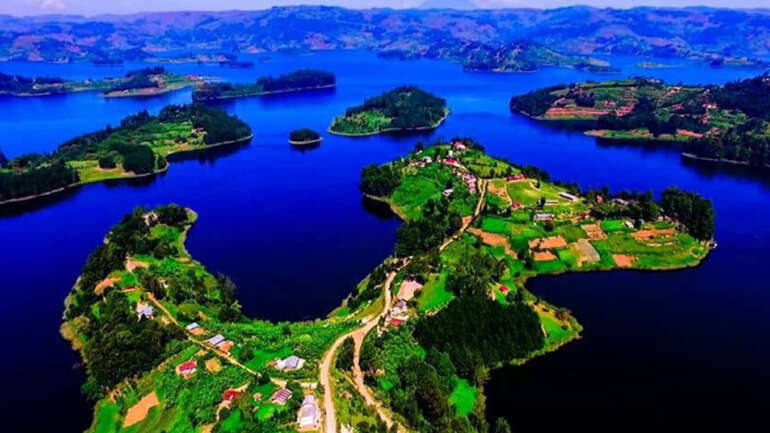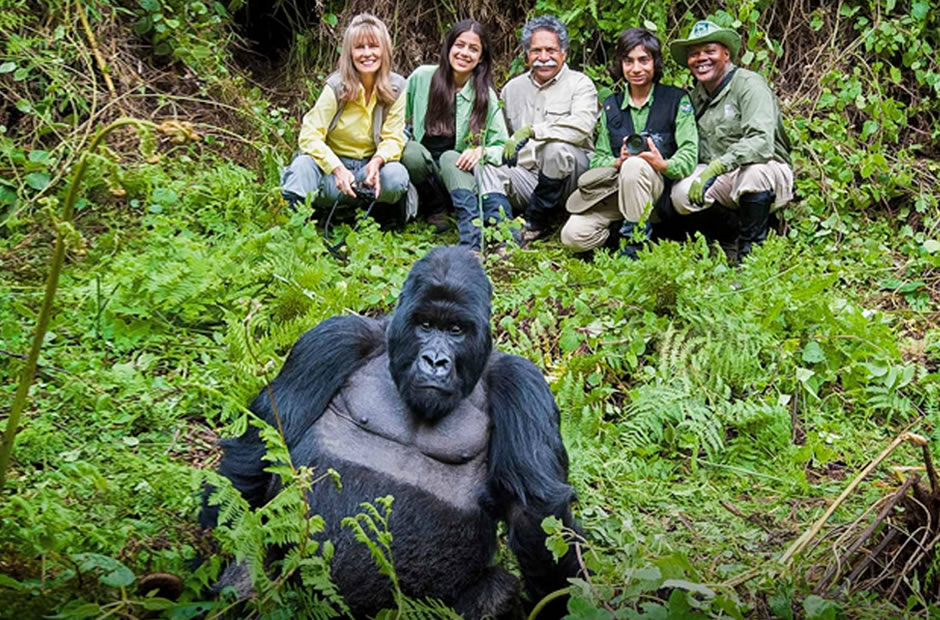We carried out our gorilla trek adventure in the Democratic Republic of Congo. It began in the SUV ride up to the starting point, a rangers’ station in the mountains of the Virunga National Park outside the city of Goma. Because the DRC is less traveled than neighboring Uganda and Rwanda, people (and gorillas) there don’t see as many Mzungu (foreigners). The tiny, very simple agrarian villages you’ll pass, and the people who run to the side of the road to wave at you, give you a glimpse of a way of life you’ve only read about.
We were told in advance that the length of the trek was entirely up to the gorillas — sometimes the guides could track them down in less than two hours, other times it took much longer. Mountain gorillas are nomadic, traveling the jungle in families and camping out just long enough to clear a wide area of all its fruit, have a nice sleep on nests of leaves, and move on. They don’t follow a clear path, either — so if you’re tracking them, you realize pretty quickly that these big suckers like to meander.
It took us six hours tramping through dense jungle, on a mat of vines that clung to our feet, to find the gorillas. There were no trails, just our guides clearing the way with machetes. We were on a path forged by gorillas, that much was clear. Our trail switched back and forth, uphill and down, at least once up a sheer cliff face that we had to scale, our hearts pounding, clinging to thick jungle vines. Deeper into the jungle, the sky had just opened up and released a good old-fashioned African jungle downpour when we heard the low gruntings ahead.
The first gorillas we saw were mothers holding their babies, with juvenile gorillas playing around them — a sight you would see in any playground in the United States — except these were gorillas instead of people. When we approached, the mamas climbed up some tall trees with their babies and generally stayed high up.
The younger ones came barreling over to us, stopped just a few feet away and started pounding their chests and hooting. Our guide told us they wanted us to play with them, and even though they were smaller gorillas, it was still intimidating. That feeling grew tenfold when a 500-pound silverback gorilla came galloping between us and them … not threatening, but definitely letting us know he was keeping an eye on the situation. The younger gorillas gave up trying to play with us and just played with each other — rolling, wrestling, swinging on vines, and pounding their chests, just like in the movies.
This was a big family, about 35 gorillas, and we only had an hour in their presence (wearing surgical masks to prevent any diseases being passed back and forth between our species). As we watched them, our guides were explaining the gorillas’ behavior — which humans can easily interpret as menacing — and we came to realize they were not threatening and all, and just as curious about us as we were with them. The rangers were familiar to them, but Mzungu women were rare in this jungle. By the time the hour was up, most of my intimidation was gone, and I got my best photos.

